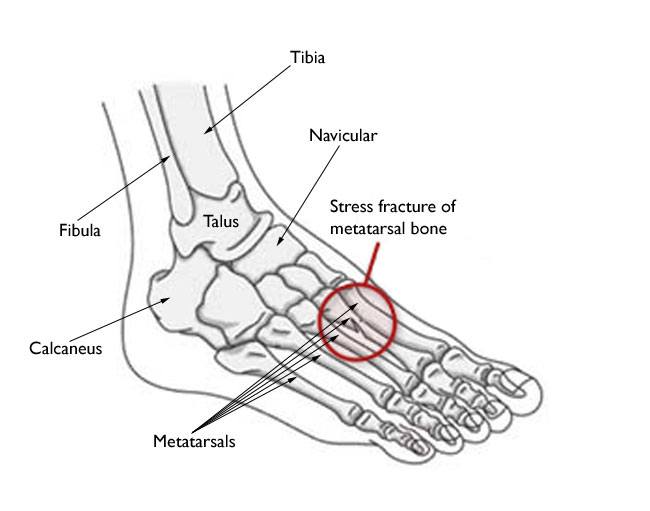With the running season in full swing and events such as Run Melbourne and the Melbourne Marathon coming up, stress fractures are an injury that we start to see a little too often.
What is a stress fracture?
A stress fracture is an overuse injury that occurs either in healthy bone that is overloaded without adequate rest or in poor quality bone that fails to tolerate a normal load, such as osteoporosis.
Why do they occur?
It is commonly seen in runners and other athletes who are required to do a lot of running or jumping. Stress fractures can occur when people increase their activity too suddenly, without adequate rest. For example; sudden progression of running 5km 1x week to 10km 4x week in preparation for an upcoming run. They can also occur with a change in surface, such as road running instead of grass.
Bone is in a constant state of turnover- we are constantly making new bone and reabsorbing old bone. The amount and strength of new bone created is in response to how much load we put on our bones. So if we exercise regularly and progress at a sensible rate, our bones will respond by becoming stronger. However, if we increase the load too quickly, the new bone does not have enough time to become strong enough and outweigh what is being reabsorbed, resulting in micro-fractures. If this process continues long enough the micro-fractures will progress to a stress fracture, resulting in pain and an inability to continue exercising.
Where do they occur?
Stress fractures occur most commonly in the bones of the foot, but can occur in other areas of the body such as the tibia (shin bone), neck of femur (thigh bone), ribs and lumbar spine. In the foot they most often occur in the 2nd and 3rd metatarsals, as these are thinner, often longer and have the greatest impact when pushing off to walk or run. Other bones of the foot commonly affected are the navicular, calcaneus, talus and fibula.
Signs and symptoms?
- Pain with activity- may start just as pain with running and progress to pain with walking too
- Pain usually settles with rest (in the early stages anyway)
- Tender to touch the area
- Possible swelling and bruising
Treatment?
Treatment for stress fractures of the foot depends on how far they have progressed. If caught early enough, a period of rest from the painful activity then slow progression back to exercise can be sufficient. If further progressed, then a period of immobilisation in a CAM boot for 4-6 weeks followed by slow return to activity is required. Pain is the biggest guide for rehabilitation. It is important not to return to running until you are able to walk pain-free. Your physiotherapist will guide you through your return to sport as well as address any factors that may have contributed- such as muscle imbalances or poor running technique.
Prevention?
Prevention is always better than cure! The best way to avoid stress fractures is to manage your load appropriately. If you are training for a big event, ensure you allow adequate time to prepare and have a good training schedule with sensible progressions. Similarly, ensuring adequate preseason before starting back to team sports is important. It is also important to address any muscle imbalances or technique issues that could increase your risk of developing a stress fracture. Your physiotherapist can help with this, so chat to one of us if you have any concerns. Clinical Pilates is also a great way to address any issues with flexibility or muscle imbalances.
-Tara Boylan

